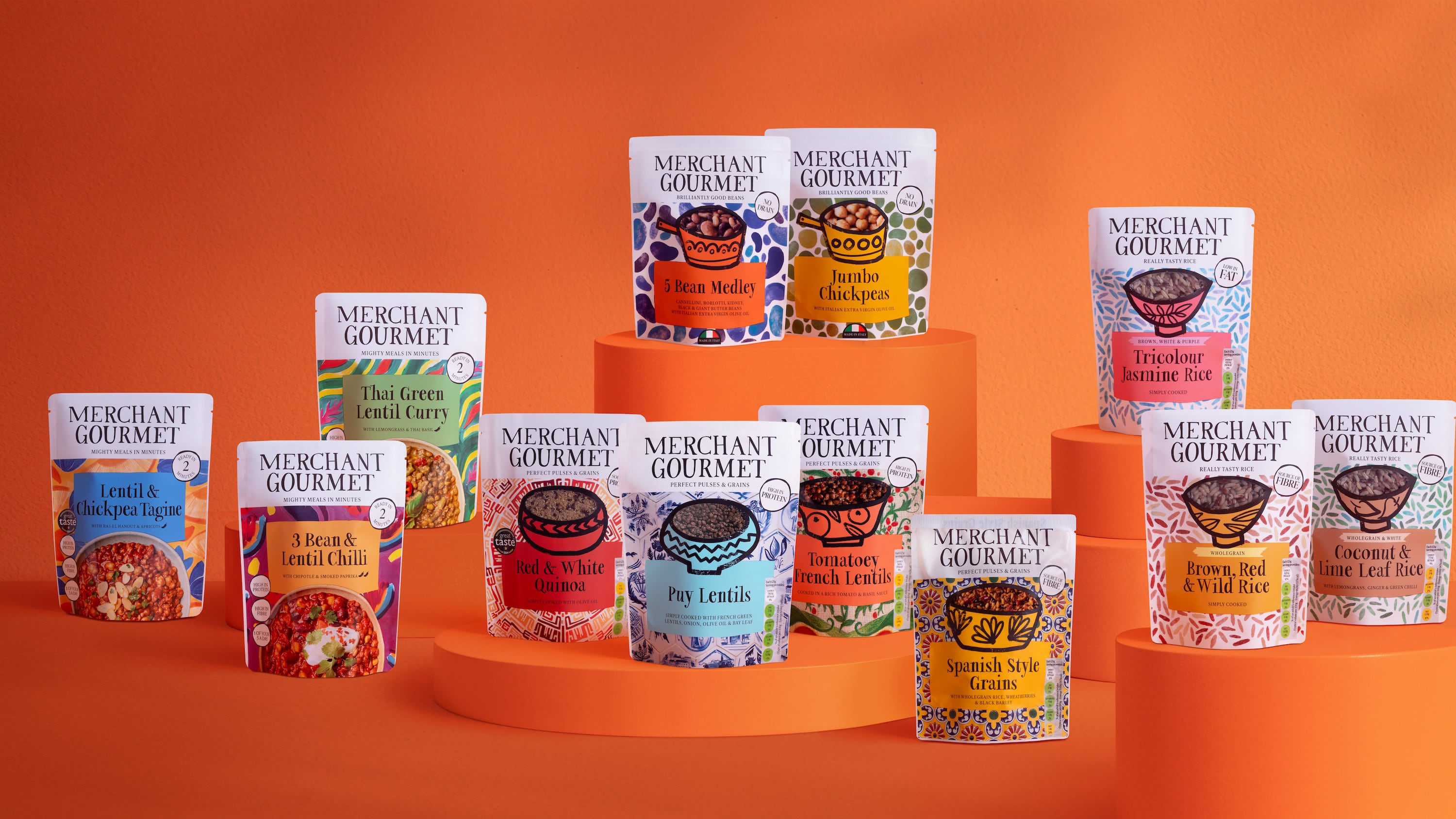This includes Muller’s acquisition of Biotiful Gut Health, SHS Drinks’ acquisition of Shandy Shack, Britvic’s of Jimmy’s Iced Coffee, Cranswick’s of Blakemans, and Premier Foods’ of Fuel10K and, more recently, Merchant Gourmet.
Commenting on the current landscape on LinkedIn, Louis Bedwell, business unit lead at the Future Food Movement, said the mergers show “where the market is heading”.
He listed these as:
- Consumers moving fast towards healthy, convenient, premium food.
- Big food players backing brands with traction and repeat purchase.
- Growth coming from portfolios that stretch into new categories and occasions.
What’s driving these mergers?
But it’s not just challengers being swallowed up in this acquisition frenzy, major players are also acquiring fellow industry giants.
Earlier this year, Greencore made several bids as it set its sights on Bakkavor. The fresh prepared food leader agreed in principle to a cash and share acquisition offer worth £1.2 billion after rejecting previous offers. This has since prompted an investigation from the Competition and Markets Authority.
The takeover is set to shake-up the ready-to-eat retail market as the two giants join forces.
Bakkavor Group employees c.18,000 people and produces c.3,500 fresh products across 43 sites (2024). Meanwhile, Greencore employs around 13,600. In 2023 it produced 779 million sandwiches and other food to go products, 132 million chilled prepared meals, and 245 million bottles of cooking sauces, pickles and condiments.
Whilst Bakkavor Group’s sales increased by 4% to £2.3bn and adjusted operating profit increased by 20.5% to £113.6 million, with operating margins improving to 5%, challenges have remained.
Chairman Simon Burke said these have been a result of rises to both minimum wage and employers’ national insurance costs. In 2024, it closed one of its factories, leading to job losses.
Elsewhere, July also saw Ferrero declare it was buying US Kellogg’s cereal maker for $3.1 billion. This followed the Mars acquisition of Kellanova the year before.
Julian Wild, food sector analyst and director at law firm Wilkin Chapman Rollits suggested the deal may have been related to WK Kellogg’s “sluggish” performance, with its quarterly net sales falling to $663 million – a drop of 6.2%.
Hot on its heels, the next month saw Associated British Food’s (ABF) – owner of Kingsmill – announcing it had reached a deal with Hovis, estimated to be worth £70 million.
As rumours circulated over the Hovis-Kingsmill deal in a ‘will they won’t they’ moment, experts predicted it was not a matter of if but when due to pressures of a dwindling UK bakery sector.
Hovis recently reported an increase in pre-tax losses from £4.8 million to £8.7 million in the period between 2023 and 2024. Meanwhile, ABF put its bread division Allied Bakeries under strategic review in April 2025 after profits and revenues declined in the 24 weeks to 1 March.
How SMEs are feeling about ‘Big Food’ mergers
Whilst it’s concerning times for big players, what of the SMEs? Are these mergers creating a sense of unease among the community or is this more of an opportunity?
Speaking with several SME leaders, Food Manufacture asked how they were feeling about this recent activity.
No challenge for challengers
For Ella McGregor, co-founder of healthy bakery challenger brand Griddle, it’s of little concern: “We’re targeting different audiences, different sector supermarket and tapping into different trends.”
Like other commentators, she noted that the merger of legacy brands is a result of declining markets.
“These legacy – quite old fashioned – brands really need to combine forces to get the efficiency,” she said.
“Yes, they have scale, but despite that they don’t have the ability to move quickly, to be nimble, to react to these market trends and consumer demands in the same way that we can.”
She ventured that recent behavioural shifts in consumers have caused issues for bigger companies’ bottom lines, with smaller brands associated with the trendy qualities of authenticity and non-UPF.
“When it is such a big brand and you’re aware of the scale of the company, I mean, for me as a consumer, I kind of associate that with really ultra processed, low-cost manufacturing, not quality.
“People really want authenticity and transparency, and to understand who’s behind the brand and where are the ingredients coming from.”
Vanessa Austin, founder of Manna Eating, agreed these mergers among bigger companies are not a threat for her challenger brand.
“These industry giant mergers illustrate the enormous pressure legacy brands face in maintaining growth at scale – global distribution networks come with razor-thin margins, and shifting quickly to meet the demands of younger consumers is challenging. For SMEs, this isn’t a threat, but an opportunity: younger generations are increasingly choosing healthier, more transparent options,” she said.
“The real challenge for SMEs isn’t competing head-to-head with legacy giants – it’s securing the funding, scale, and visibility needed to deliver sustainable value where mainstream brands struggle to do so.”
SMEs: ‘Big enough to scare’ big players, but ‘small enough to be volatile’
Francesca White, managing director at SME Porky Whites, was less optimistic: “These deals are a concern for smaller businesses like Porky Whites. Bigger players come out of them with more buying power, more control over shelf space, and the ability to set pricing expectations that put real pressure on our margins. At the same time, supplier costs can rise, making it harder to stay competitive without cutting corners – which is something we’ll never do.
“It means we have to rethink our strategy constantly, looking for new routes to market, protecting our premium positioning, and innovating to stand out. I can’t help but think that now might be the time for smaller players to look at working together – whether that’s through partnerships, shared resources or other ways of joining forces – so we can use our collective strength to keep competing in an increasingly consolidated market.”
David Couldrey, who works as technical director for fellow meat processor Wicks Manor, had similar concerns. He aired his fears for small abattoirs, which are feeling the pressure of rising costs.
“They’ve either got to grow rapidly and make themselves profitable or they don’t last,” he said.
He added that the closure of smaller slaughterhouses could also introduce issues such as animal welfare, with livestock having to be moved much farther to larger plants and endure longer journeys.
“If they’re on the lorry for 30-40 minutes that’s great – when they get to the other side, they’ve got time to calm down. But when you start to increase those times to three to four hours, that’s obviously going to have an impact.”
However, like others Couldrey noted that if you are in a niche market, such as value-added products, you’ll probably be able to ride the storm.
“It would be unrealistic to think that the big market leaders will stop finding ways to get even bigger. We live in a capitalist world after all, like it or not,” added Ella McKay, founder of FATSO Chocolate.
“As I see it, mergers like these will hurt medium sized businesses, the businesses that are successfully stealing share from the big,” she said.
“It’ll hurt them because they’re big enough to compete, but small enough to be volatile and feel the impact. Big enough to scare the bigger ones into responding with directly competing tactics, but small enough to be independently run and without endless resources to defend their position.
“Interestingly, I’ve observed that consumer sentiment around mergers is often cynical and can actually work in the favour of truly small businesses like ours, because it reminds people to not let the indies get left behind. But that sentiment and action won’t stretch to the mediums; to consumers they’re part of the ‘big boy’ movement.”
“As a speciality independent producer, I can’t help but view these giant mergers with a mix of concern and cautious optimism,” said Richard Parson, managing director of the Fudge Kitchen.
“When huge swathes of our food supply end up in the hands of very few, it limits consumer choice and makes it harder for smaller businesses like ours to compete. The impact of supply chain price fluctuations on us is critical – it can be the difference between a product making it to market or not.
“My hope is that competition between these newly merged giants will lead to less aggressive pricing for ingredients, which would be a welcome relief for independent producers across the UK.”





